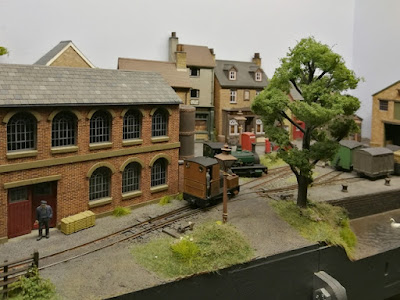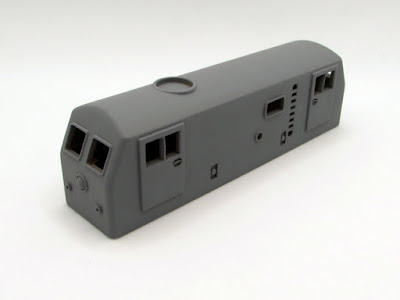Railway modelling in 7mm scale on 9mm gauge track, representing 15" gauge miniature railways and 18" gauge industrial railways. (Plus anything else that I choose to include!)
Monday, 28 February 2022
The Humble Van
Monday, 14 February 2022
An afternoon at the races
Back in September I went to a small local exhibition and was quite content with being at a smaller show. I wasn't planning to go to the much larger exhibition at Doncaster racecourse but after some thought decided at about 11.00 on Sunday morning to make the short trip to the show. My plan was to concentrate on the layouts and to try and ignore the trade...
The layout I really wanted to see was the smallest there, Michael Campbell's Loctern Quay, and I wasn't disappointed! I managed a couple of snaps on my phone:
Saturday, 12 February 2022
All tooled up with no place to go...
Last seen a few weeks ago, the rebuilt tool wagon is now completed, varnished and weathered. The project suffered a setback midway through painting and had to be stripped, re-primed and a fresh start made. As a change from the original grey the new colour is Vallejo blue-grey with strapping and underframe in black-grey and the roof in a slightly lighter mix of the same.
Sadly the lighter colour and photos seem to over-emphasise that the roof section of the wagon does not fit as well as it should do and there are a few gaps, especially along the edges of the lifting sections. This is acceptable as they are meant to be separate parts but also annoying as I should have spotted the fit issue before painting, especially after the strip down! Here I've posed the tool wagon with the open wagon that shares the same underframe design, showing how the rebuilt wagon now fits in with the new builds.
Sunday, 6 February 2022
Anchor-esqe in O9
That tends to make things look worse than they are! After 24 hours drying, 400 grit wet and dry was then used to smooth back the finish, using home made sanding sticks. After another clean up, yellow filler primer was then sprayed and after another 24 hours drying, 800 grit, used both wet and dry used to smooth a lot of it away, resulting in a Wisconsin Central/EWS camouflage finish (!)
After a further clean-up I then opted to spray the roof and cab window areas in another coat of filler primer, and after another 24 hours smoothed everything back with 1200 grit, used wet, ready for a last clean and then a coat of grey primer.
The print slips nicely over the cheapest Bachmann US N gauge bogie diesel chassis, in my case a U36B. It will also fit over a range of other suitable chassis in a similar mould. I've posed it on the Bachmann chassis but I will check how well it performs before making a final choice as I have an Atlas chassis that would also fit which has the advantages of flywheels and maybe smoother starting. I suppose it depends on how much it will actually get used...


















